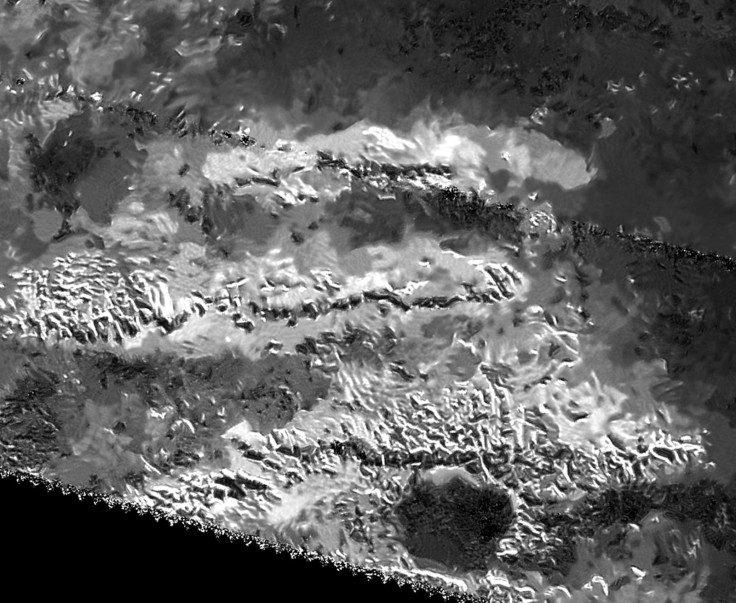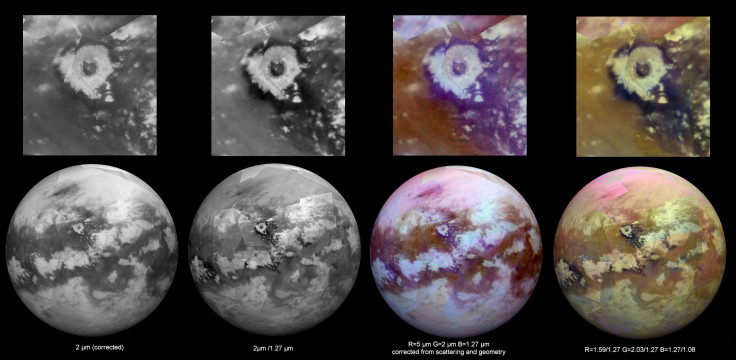Titan’s Tallest Mountain Provides Clues To What Lies Beneath The Alien Moon’s Crust

“Frigid and alien, yet similar to our own planet billions of years ago,” is how NASA describes Saturn’s largest moon, Titan, in one of its recently released space tourism posters. Daring tourists of the future can now add another destination to their wish list — Mithrim Montes, a trio of mountainous ridges that house the alien moon’s tallest peak, which stretches to an altitude of nearly 11,000 feet.
“It's not only the highest point we've found so far on Titan, but we think it's the highest point we're likely to find,” Stephen Wall, deputy lead of the spacecraft Cassini’s radar team at NASA's Jet Propulsion Laboratory, in Pasadena, California, said in a statement.
Most of Titan's tallest mountains, identified using instruments on board Cassini — which is currently orbiting Saturn — appear to be close to the equator. As part of their investigation aimed at finding “active zones” within Titan's crust, researchers identified several peaks of similar height within the Mithrim Montes, in the rugged region known as Xanadu, and in clumps called “ridge belts” located near the landing site of the European Space Agency’s Huygens probe.
Over a decade of observations conducted by Cassini have revealed Titan as a world perennially surrounded by a thick, cloudy atmosphere that rains methane down on its meandering ridges and valleys. The moon also has lakes, and possibly even oceans, made of methane and ethane, as well as vast dune fields made of hydrocarbon sands.
On Earth, mountains and cliffs are usually found in locations where tectonic forces have shoved the surface upward from underneath. So, the fact that Titan has mountains — albeit smaller than those on Earth — suggests that some active tectonic forces, such as tidal forces from Saturn, could be affecting the surface.
“As explorers, we're motivated to find the highest or deepest places, partly because it's exciting. But Titan's extremes also tell us important things about forces affecting its evolution,” Jani Radebaugh, a Cassini radar team associate at Brigham Young University in Provo, Utah, said in the statement.
Separately, NASA also released images taken by Cassini as part of its mission to create a “global map” of the alien moon. The maps, created using data acquired by the visual and infrared mapping spectrometer (VIMS) on board the spacecraft, show the relatively fresh 50-mile-wide Sinlap impact crater and the region surrounding Huygens’ landing site.

“Producing a seamless global map of Titan is a challenging task, because observing conditions can vary greatly between each flyby. Among these variations are changes in the angle of the sun with respect to the surface and in the spacecraft's viewing direction. Such variations can make it even more difficult to remove the effects of scattering and absorption of light by Titan's thick, hazy atmosphere,” NASA said in a statement. “These factors create a complex problem that researchers are still working to solve.”
© Copyright IBTimes 2024. All rights reserved.






















